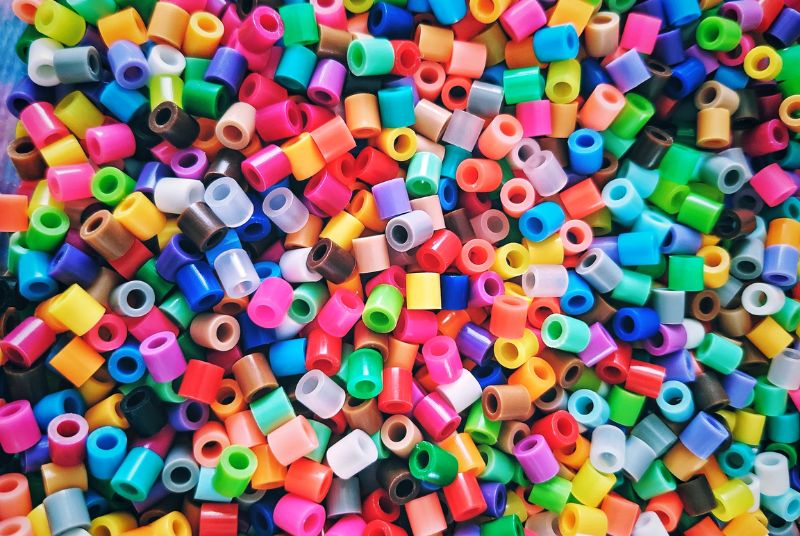Types of Waste: Recycling Methods and Innovations
Types of Recyclable Materials
As our contemporary lifestyles continue to flourish, so does the concerning issue of waste generation. The burden on our planet is growing all the time, from domestic trash to industrial byproducts. Yet the situation is still manageable. With the development of sustainable practices and new recycling methods, we now have the ability to reduce the environmental impact of human waste. Let’s take a look at the numerous types of garbage produced by people and potential recycling solutions to achieve a greener and cleaner future.
Paper and Cardboard Recycling
Paper and cardboard waste account for a major component of our daily waste stream. We can save natural resources and minimize deforestation by recycling these items. Recycling includes gathering and sorting paper and cardboard, removing pollutants, and converting them into new products such as recycled paper, packaging materials, and even building materials.
Recycling paper is critical for lowering environmental impact and reducing unneeded general trash. In Europe, industry and commerce discard around 23 million tons of paper and cardboard each year; the majority of paper is recyclable and may be diverted away from disposal sites. Each tone of recycled paper or cardboard saves up to 17 trees, 0.76 cubic meters of landfill space, and 4100 kWh of electricity. Moreover, manufacturing new paper from recycled stock uses 70% less energy than making new paper from virgin pulp.
Plastic Recyclability
The world produces 381 million tons of plastic waste each year. This number is going to double by 2034, which is why recycling plastic is critical. Plastics are classified into around 50 different classes, each with hundreds of different variants. Because most varieties of plastic are recyclable, they must be recycled in order to limit the quantity of waste going to landfills and help prevent the trash from ending up in the ecosystem.
Did you know you can check the resin identification code on your plastic to see if it is recyclable? The number ranges from one to seven and is flanked by three arrows, meaning the type of plastic. If you’ve ever wondered what your one-time plastic package is made of, it’s that easy to find out. The approximate decomposition time for all these types of plastic is around 500 years, according to modest calculations.

Glass Recycling
Glass is a 100% recyclable material that may be converted indefinitely without losing quality or purity. Recycling glass saves energy and reduces landfill waste. Taking into consideration that its decomposition period is close to one million years, it’s a major issue for landfills that are becoming overloaded with glass waste.
Crushing and melting glass cullet allows the production of new glass containers or the use of this glass as aggregate in construction projects. The only precondition for recycling glass is that it should be as clean and contaminant-free as possible. Bottles, jars, windows, drinking glasses, computer screens, and other goods are graded. Recycling glass, like other recycled materials, saves a substantial amount of energy and effort.
Metal Recycling
Metal is an important element in everyday human life and is used everywhere, from construction sites to kitchen teaspoons. Its recycling is an integral part of sustainable waste management since it provides numerous environmental and economic benefits. Metal recycling entails collecting, classifying, and melting down various metals, such as aluminum, steel, and copper, to generate new goods. Society can save valuable natural resources, cut energy usage, and reduce greenhouse gas emissions connected with primary manufacturing by recycling metals. Furthermore, metal recycling minimizes the need for mining and extraction, which can have negative environmental consequences. Furthermore, the economic benefits of metal recycling are obvious, as it supports a vibrant industry, produces jobs, and adds to the entire circular economy. We may contribute to a greener future while enjoying the benefits of a sustainable and resource-efficient society by practicing responsible metal recycling.
Electronic waste recycling
Electronics recycling is an essential component of responsible waste management in the digital age. As technology continues to advance at a rapid pace, electronic devices have become an integral part of everyone's daily lives. Between 2017 and 2027, the consumer electronics market is expected to nearly triple in size, experiencing a consistent annual growth rate of 15.1%. However, improper disposal of electronic waste, or e-waste, poses significant environmental and health risks. Because of the presence of toxic elements, electronic waste poses considerable health concerns. According to TechReset, e-waste contains elements that are detrimental to human health, such as lead, mercury, cadmium, and brominated flame retardants. When dangerous chemicals are incorrectly disposed of or burned, they can leak into the environment, harming soil, water supplies, and the air we breathe. Exposure to these dangerous compounds can cause a variety of health problems, such as respiratory problems, neurological diseases, renal damage, reproductive disorders, and even certain types of cancer. To avoid these health concerns and safeguard both human health and the environment, it is critical to treat and recycle electronic trash correctly.
Through dismantling and segregating components, e-waste recycling enables the extraction of precious metals like gold, silver, and copper, reducing the need for destructive mining practices. Furthermore, responsible e-waste recycling mitigates the environmental impact of landfill disposal, conserves natural resources, and promotes the sustainable use of electronics. By supporting and participating in e-waste recycling initiatives, we can minimize the negative consequences of our technology consumption and contribute to a cleaner, healthier planet for future generations.
Organics Recycling
Organic waste, such as food leftovers and yard trimmings, can be recycled through composting or anaerobic digestion. Composting is the breakdown of organic matter into nutrient-rich soil amendments, whereas anaerobic digestion generates biogas for energy generation. We reduce greenhouse gas emissions from landfills and support circular agriculture by recycling organic waste.
Textile Recycling
Because the fashion industry generates a substantial amount of textile waste, textile recycling is critical to lessening its environmental impact. Textiles can be separated, shredded, and remade into new fabrics, or they can be used for insulation, carpet padding, and even industrial wiping cloths. Donating or repurposing garments also helps to extend their lives and reduce waste.

Advanced Recycling Methods
Paper and cardboard: In addition to standard recycling methods, novel methods like deinking have gained popularity. To generate high-quality recycled fibers, inks, coatings, and other impurities are removed from paper and cardboard. This method allows for the recycling of a broader range of paper items, such as glossy magazines and packaging materials.
Plastic: Advanced recycling processes such as pyrolysis and depolymerization have transformed plastic recycling. Pyrolysis is the process of heating plastic waste in the absence of oxygen in order to break it down into its fundamental components, which can then be used to create new plastics, fuels, or other useful goods. Depolymerization is a chemical process that breaks down plastic polymers into their constituent monomers, allowing the manufacture of virgin-like plastics.
Glass: In addition to typical recycling processes, foam glass manufacture is a promising advance in glass recycling. Foam glass is made by heating and melting recycled glass and adding a foaming ingredient. The final material is lightweight, insulating, and has excellent drainage capabilities, making it appropriate for uses in building, horticulture, and infrastructure.
Metal: Recycling efficiency has increased because of advanced sorting methods such as optical sorting and electromagnetic separation. Sensors and magnets are used in modern sorting systems to identify and sort different types of metals, speeding the recycling process and saving waste. Furthermore, novel techniques such as electrochemical refining improve the extraction of valuable metals from electronic waste streams.
Organic Waste: Innovative approaches to recycling organics have gained traction in recent years. Anaerobic digestion is one such approach. It allows microorganisms to break down organics in the absence of oxygen, resulting in biogas and nutrient-rich digestate. Such biogas can be used as an alternative energy source and as fertilizer in agriculture, therefore closing the loop on organic waste management.
These novel recycling approaches provide promising options for reducing waste, conserving resources, and decreasing environmental impact. Implementation of such innovative methods gives humankind a way to a more conscientious and circular future by embracing these breakthroughs and supporting research and development in recycling technologies.
